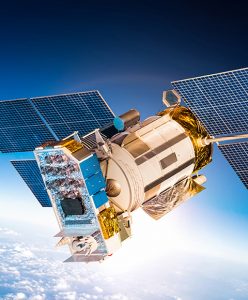The commercial satellite industry is at a major inflection point, and not because of the massive increase in the number of satellites launched in the last five years. It would be next to impossible to overstate just how important they’ve become to the modern world. Without satellites, large swaths of society would all but grind to a halt—and that’s not even counting the government satellites essential to national security.
Despite their essential role, there is no maintenance infrastructure per se for space systems. The traditional approach to ensuring that satellites continue to do their job has been to build in reliability, making them as robust as possible, and replace them only in case of obsolescence or failure. This paradigm is changing, and over the next few years the world will witness the emergence of what’s likely to be an entirely new industry—on-orbit satellite servicing and spacecraft repair. It’s a futuristic concept first imagined decades ago, and it has arrived.
Earlier this year, Northrop Grumman and its subsidiary SpaceLogistics made history by docking two commercial  satellites in orbit, opening up the market for on-orbit servicing as a much cheaper alternative to satellite replacement. Its Mission Extension Vehicle-1 (MEV-1) docked with Intelsat 901 (IS-901), a 17-year-old communications satellite running low on fuel, and provided five year’s worth of life extension services. This marked the first time that mission-extension services were executed in geostationary orbit.
satellites in orbit, opening up the market for on-orbit servicing as a much cheaper alternative to satellite replacement. Its Mission Extension Vehicle-1 (MEV-1) docked with Intelsat 901 (IS-901), a 17-year-old communications satellite running low on fuel, and provided five year’s worth of life extension services. This marked the first time that mission-extension services were executed in geostationary orbit.
For the relatively low cost of $13 million, the fee that Intelsat paid to Northrop Grumman for the MEV-1 mission, Intelsat expects to gain five more years of service life out of IS-901, a satellite that originally cost about $300 million to build. And let’s not forget the revenue that Intelsat will continue collecting from customers using the communications satellite over that five-year period.
Intelsat Chief Services Officer Mike DeMarco said the company “looks forward to pioneering new applications of commercial space-servicing as the technology progresses.”
For its part, NASA recently launched a national initiative to promote the development of satellite servicing and in-space assembly technologies among U.S. government agencies that have differing views on the value of such capabilities. OSAM is intended to foster the exchange of information and establish partnerships between government, industry and academia, on the use of such technologies to repair existing satellites and create new capabilities in space.
“It’s going to be really important to work together collaboratively, because we want to move forward with these OSAM technologies and advance them collectively as a suite of capabilities,” said Deborah Tomek, NASA senior advisor for OSAM and one of the leads of the new initiative.
The OSAM national initiative has several priorities, including determining where government agencies should fund OSAM-related technologies versus areas where companies are making their own investments. A near-term effort is a series of capability assessments that will help identify any gaps in technology developments. “Once we have a broader picture of that, then we can look at how best to influence and fund those investments,” she said.
NASA is slated to launch the Maxar Technologies-built OSAM-1 spacecraft in 2024 to refuel the government-owned Landsat 7 satellite, which provides data for remote sensing and Geographic Information System science and applications around the world.
Long before then, however, space companies will continue to demonstrate the benefits of on-orbit servicing of satellites. For example, a second MEV-2 is scheduled to dock with Intelsat 10-02 in early 2021. Longer term, Northrop is working to establish a fleet of satellite servicing vehicles. “Now that MEV-1 has successfully delivered on its mission to place the Intelsat satellite back into operational service, we will continue to pioneer the future of on-orbit servicing through our multiyear technology roadmap leading to additional services such as inspection, assembly and repair,” said Tom Wilson, president of SpaceLogistics and vice president of Northrop Grumman Space Systems.
The compelling economic benefits of servicing satellites aside, there is another strong motivation for advancing the technology that MEV-1 demonstrated: With more than 3,000 dead satellites in orbit today, finding ways to fix obsolete or failing satellites with robots could help space-faring nations reduce the amount of space junk surrounding Earth.
Moreover, the U.S. and other countries can use robotic spacecraft to build structures in orbit, and open new doors to expanding the commercialization of space.
One of the major challenges of performing in-space servicing is getting two spacecraft to rendezvous and dock in orbit. To make space robotics successful, companies need to make sure they can approach a target spacecraft slowly and safely, and then attach to it without causing any damage. In the case of the IS-901 and MEV-1 mission, both spacecraft were moving at about 7,000 mph when they successfully docked.
Just as notable is that IS-901 was not even designed to be serviced. Not surprisingly, some satellite manufacturers are now thinking in terms of building satellites with servicing in mind. That would make the process of performing repairs and upgrades on-orbit simpler and more efficient, said Sabrina Andiappane, an engineer with Thales Alenia Space in France and coordinator of European Robotic Orbital Support Services.
##
Editor: Learn more about the new frontier of satellite technology, and download our e-book here
